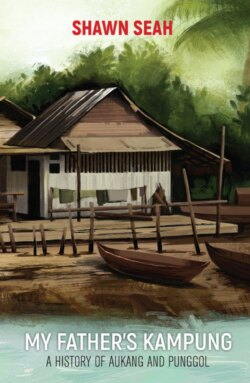Читать книгу My Father's Kampung - Shawn Seah - Страница 12
На сайте Литреса книга снята с продажи.
The Singapore Chinese
ОглавлениеThe Singapore Chinese resident population has three major dialect groups—Hokkien, Teochew, and Cantonese. The Hokkien form the largest group, followed by the Teochew.
Historically, the Teochew were one of the earliest groups of Chinese to arrive in Singapore.1 They came from eight districts in China, Ngee Ann being the ancient name for Chaozhou prefecture in Guangdong province where Teochews originated. According to the Teochew Poit Ip Huay Kuan, these districts were Teo Ann (Chaoan), Theng Hai (Chenghai), Teo Yeonh (Chaoyang), Kit Yeonh (Jieyang), Jeow Pheng (Raoping), Po’ Leng (Puning), Hui Lye (Huilai), and Nam Oh (Nanao).
While some Teochews came to Singapore from Dapo (also Dabu, or Hakka district), language differences led to Dapo being separated from the Teochew region, leaving only eight districts, although after the 19th century, the Chinese government further divided the 8 districts into 11.
Nevertheless, in Singapore, Teochew organisations, such as the Ngee Ann Kongsi led by Teochew community leader Seah Eu Chin and the Teochew Poit Ip Huay Kuan, established later, were set up based on eight districts.
To express gratitude for a safe journey from Guangdong province to Southeast Asia, Teochew seafarers and merchants in Singapore set up a shrine dedicated to the deity Mazu, the Goddess of the Sea, in the 1820s.
Subsequently, another temple was established, called the Lao Ye Temple, or Lau Ya Keng, dedicated to Xuan Tian Shang Di (commonly known as Lao Ye), the ancestral deity of the Teochews.
These two temples were merged in 1826 and the resulting temple was named the Yue Hai Ching Temple. Although the temple was founded by Teochews, its patrons also included many Cantonese. The temple has been managed by the Ngee Ann Kongsi since 1845 and has undergone several rounds of expansion, renovation, and reconstruction. In 1899, the temple was bestowed with “peaceful clouds over the ocean at dawn” by Emperor Guangxu of the Qing dynasty.2 Singapore’s oldest Teochew temple was gazetted as a national monument in 1996.
Historically, many Teochews were involved in the planting of gambier and pepper in the Riau Archipelago even before the arrival of the British, and contributed greatly to the opening up of the interior of our island, beyond the Singapore River area.3
They were also deeply involved in the import and export business of goods and services. For example, my ancestor, Teochew merchant Seah Eu Chin (1805–1883), bought and sold goods such as local produce and necessities to supply the junk trade between Singapore and the Riau islands, Sumatra, and other ports in the Malay Peninsula, and later went into the gambier and pepper business, just like other Teochews before him. Eventually, he came to be known widely as the King of Gambier and Pepper.
Yueh Hai Ching Temple (or Wak Hai Cheng Bio) is the oldest Teochew temple in Singapore and a national monument.
In 1848, in the article “The Chinese in Singapore” in the Journal of the Indian Archipelago and Eastern Asia, Seah Eu Chin estimated that the Chinese population was around 40,000, of which 19,000, or about half, were Teochews.
However, as growth in the number of Hokkien and Cantonese immigrants in the mid-19th century outpaced that of the Teochew, by the time the first systematic population census was undertaken in 1871, where the Chinese were accounted for by dialect groups, the Hokkiens had already overtaken the Teochews as the largest dialect group in Singapore.4
In 1990, there were around 896,000 Hokkiens and 466,000 Teochews.5 A decade later, there were more than one million Hokkiens and 526,000 Teochews. Collectively, Hokkiens, Teochews, and Cantonese formed three-quarters of the Singapore Chinese population, and the remaining quarter consisted of at least 19 other dialect groups in Singapore.
In 2010, there were 562,000 Teochews out of 2.8 million local Chinese, making the Teochew community slightly above 20 percent of the Chinese in Singapore.6 In comparison, the Hokkien community was around 1.1 million (40 percent) strong, the Cantonese were around 410,000 (15 percent), and all other Chinese dialect groups made up about 700,000 (25 percent).
With that many Teochews in Singapore, one would think that the Teochew dialect would be widely spoken.
However, that is not the case.
